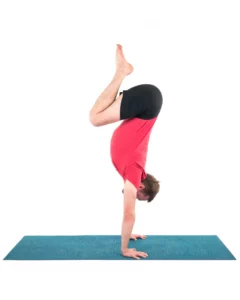The 3 Keys to Keeping the Fascia Hydrated with Tom Myers (Plus Video!)

The aging of the fascia is a key factor in many age-related changes that happen as we get older, says Anatomy Trains author Tom Myers. It is commonly known that hydration is critical to the youthfulness and suppleness of fascia, because as the fascia dries out, it begins to fray or stiffen. But keeping the fascia hydrated isn’t just about drinking water, there’s a lot more to the process.
In this video, Tom explains why drinking water isn’t enough–and what we can do to improve the flow of hydration to our 72 million cells.
Hydration, as Tom notes in this video, is critical to the youthfulness and suppleness of fascia. As the fascia dries out, it begins to fray or stiffen. This shows up in numerous ways, both obvious and not so obvious. Wrinkles are a result of fascia growing out, but so is the need for reading glasses. The reason most people need reading glasses as they get older is that the connective tissue inside the iris of the eye loses elasticity as it dries out, so we can no longer accommodate our focal length the way we could before.
How do we counteract the drying out of fascia? A Tom explained, drinking a lot of water isn’t enough; we have to get that water out to the tissues. Here are the 3 keys to ensure the proper hydration of the fascia.
The Three Keys to Fascial Hydration:
1. Get Enough Movement. Movement is essential. If we don’t move the body we will not get the water out into the tissues where it needs to be.
2. Engage in Varied Movement. Varied movement is essential. If we do the same movements, the same parts of the body gets hydrated. By doing unusual movements or a varied yoga routine you ensure that the hydration stimulated by the movement reaches all parts of the body. Also, by rolling yourself with a roller, or by getting bodywork in unusual and stiff places, we can rehydrate tissues that have become dehydrated in the course of our life.
3. Alternate with Rest. Don’t overlook the importance of rest in allowing the tissues to rehydrate. When you’re really working out tissues you’re squeezing the water out of the tendon, fascia, muscle, or whatever joint tissues were strained by the work that you’re doing. It’s important to allow the tissues to rehydrate by taking the strain off of them. When you take the strain off of them, like a sponge, the soft tissues will suck up the water and be ready for more exercise. A common rule of thumb is to take 5 minutes of rest for every 25 minutes of work-out, depending on your level of training and genetics. It’s critical to include some rest to avoid predisposing yourself towards fascia injury.



